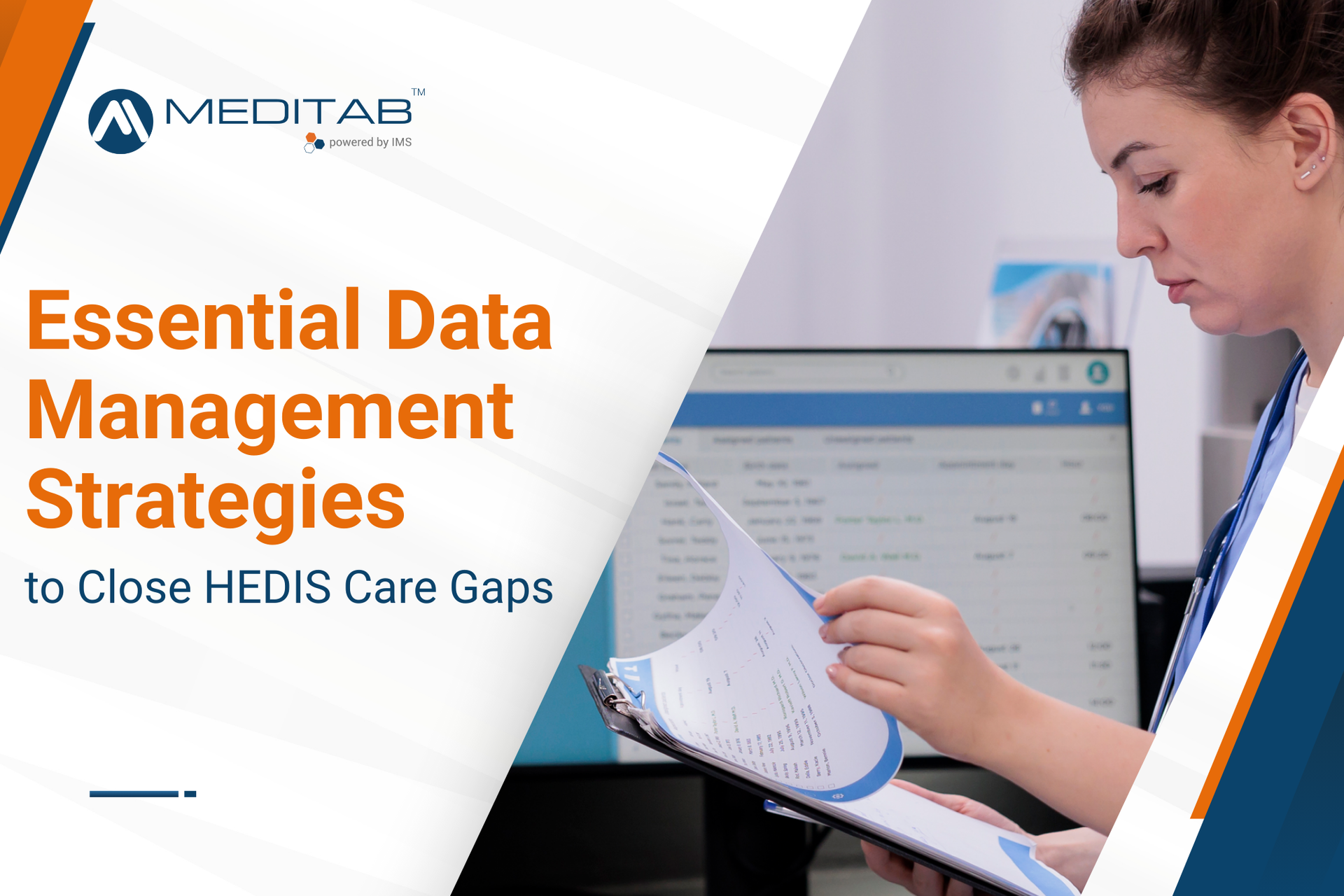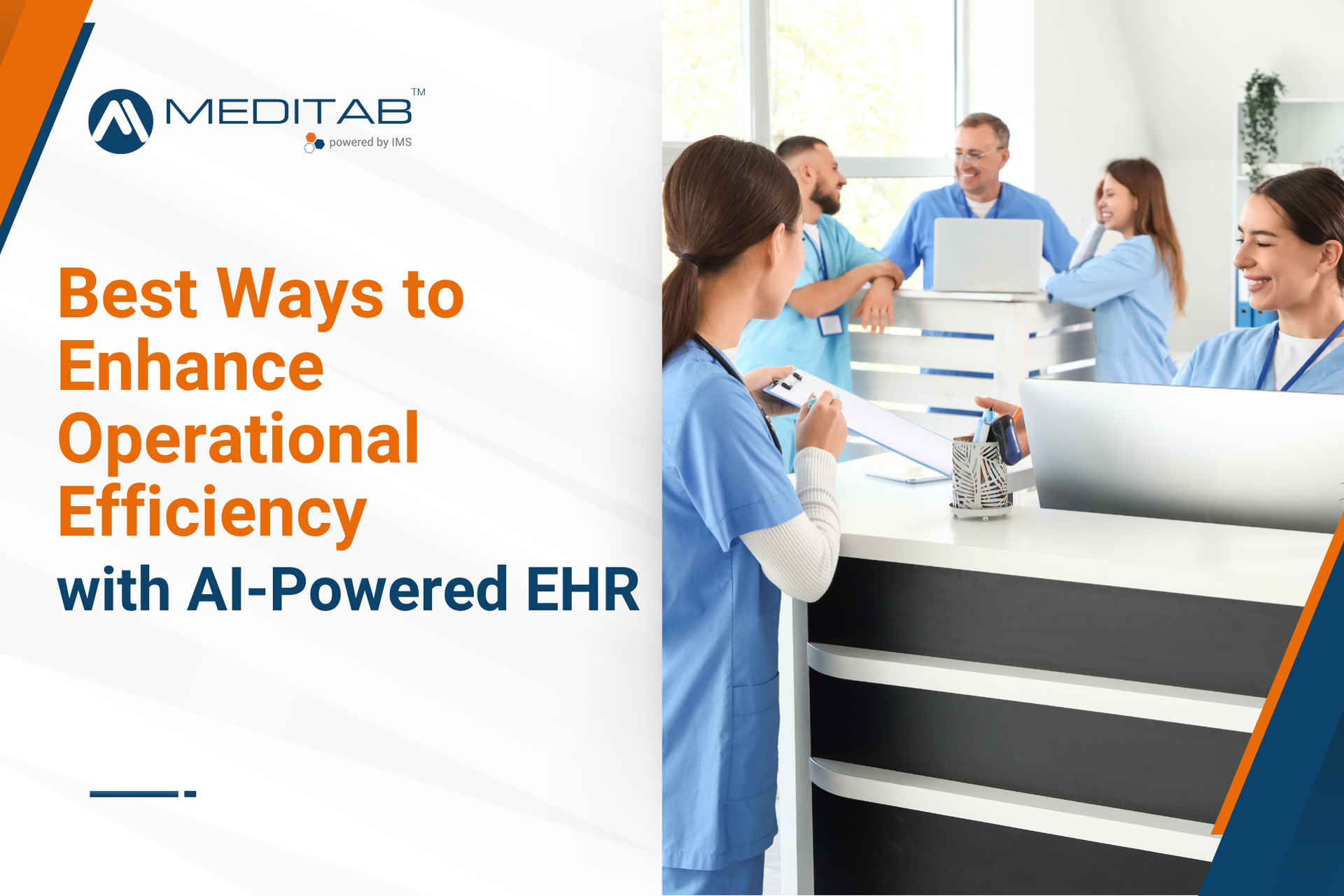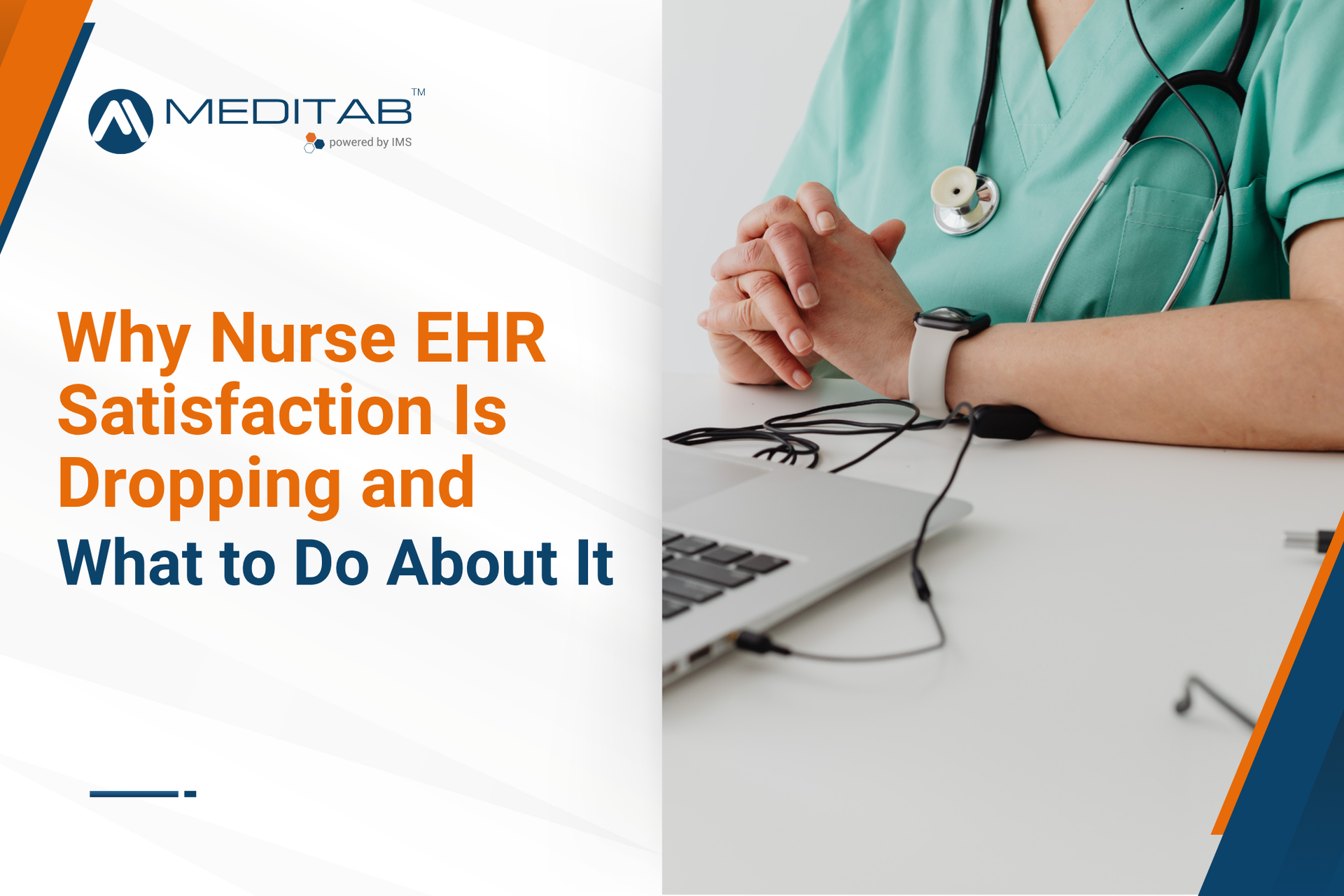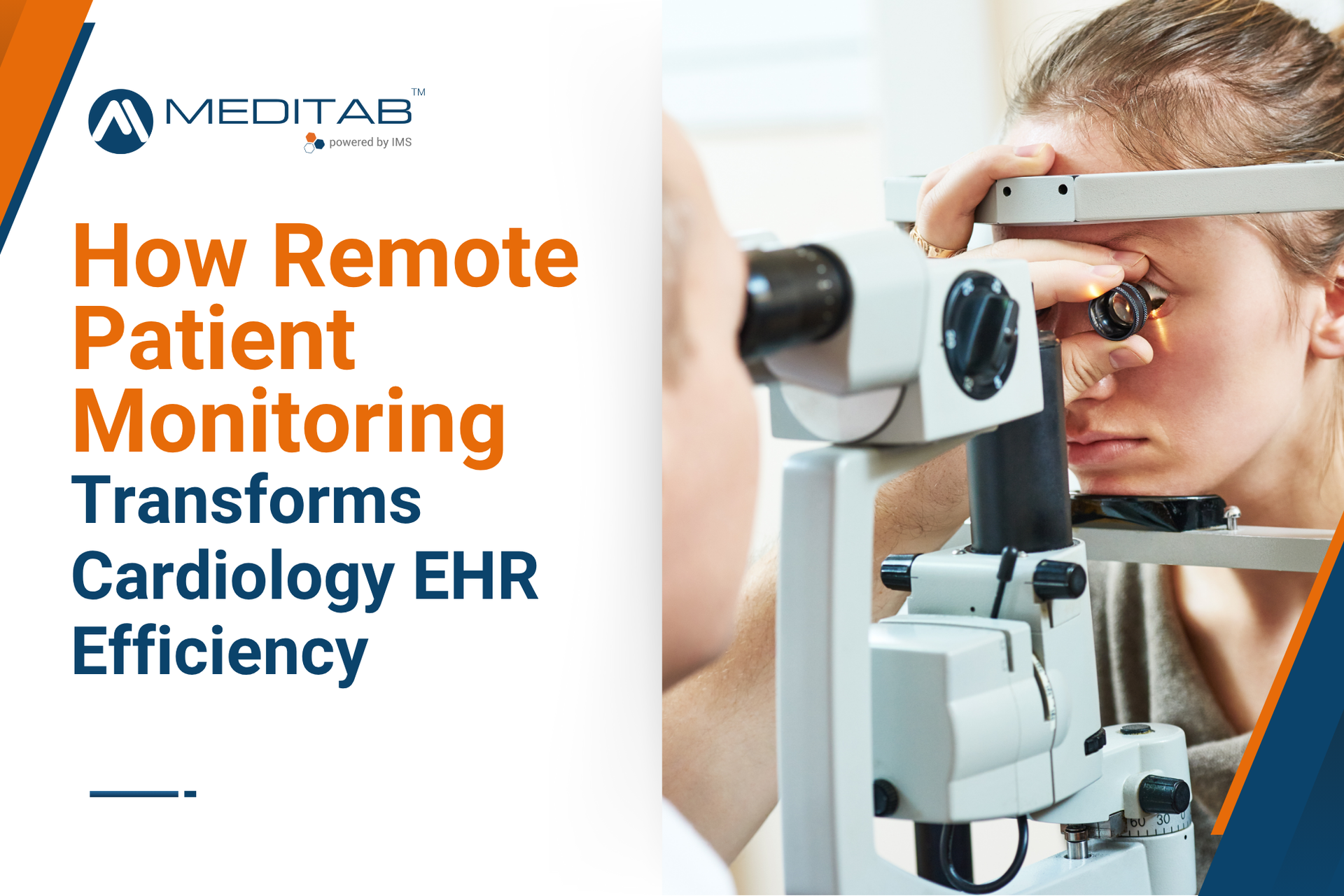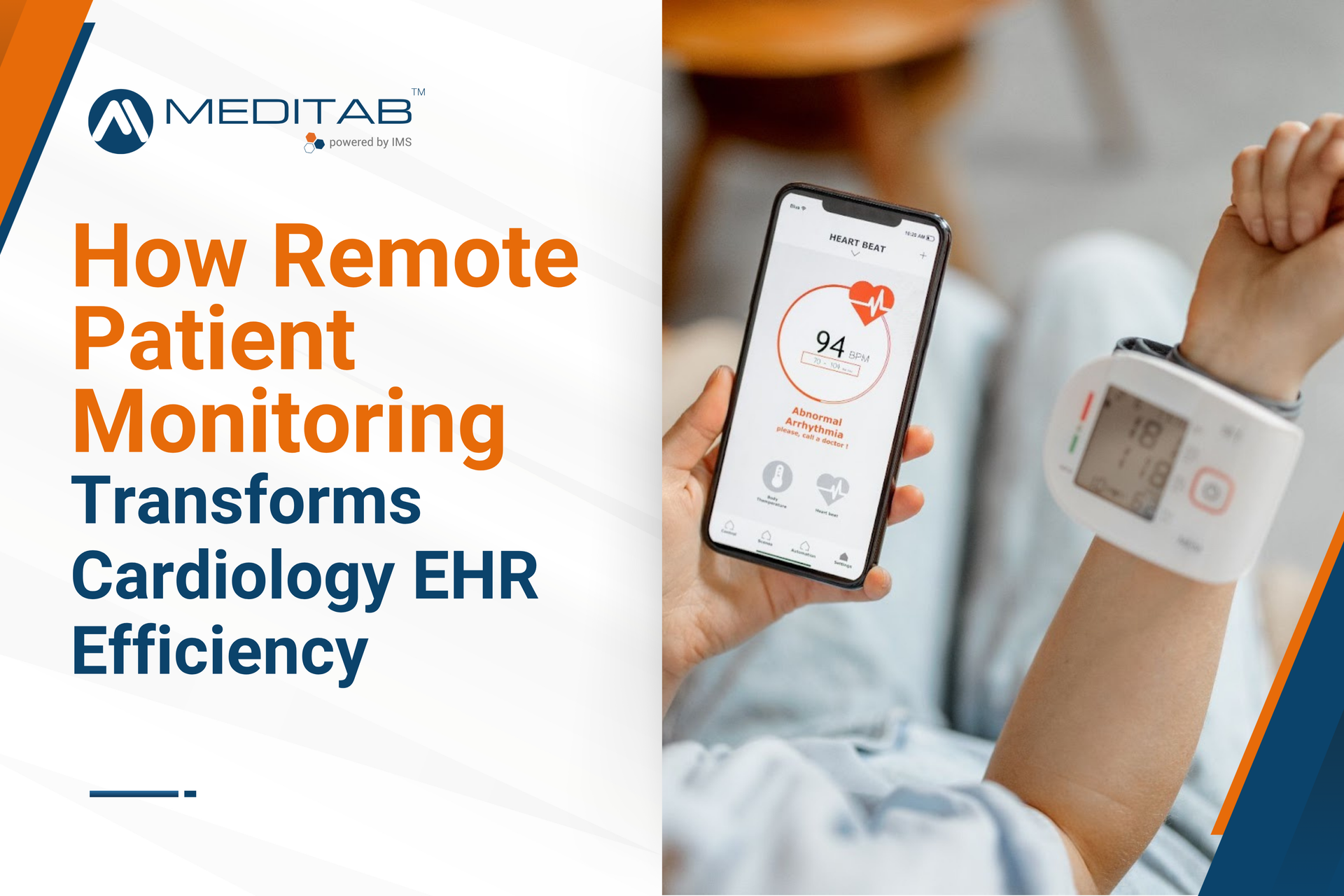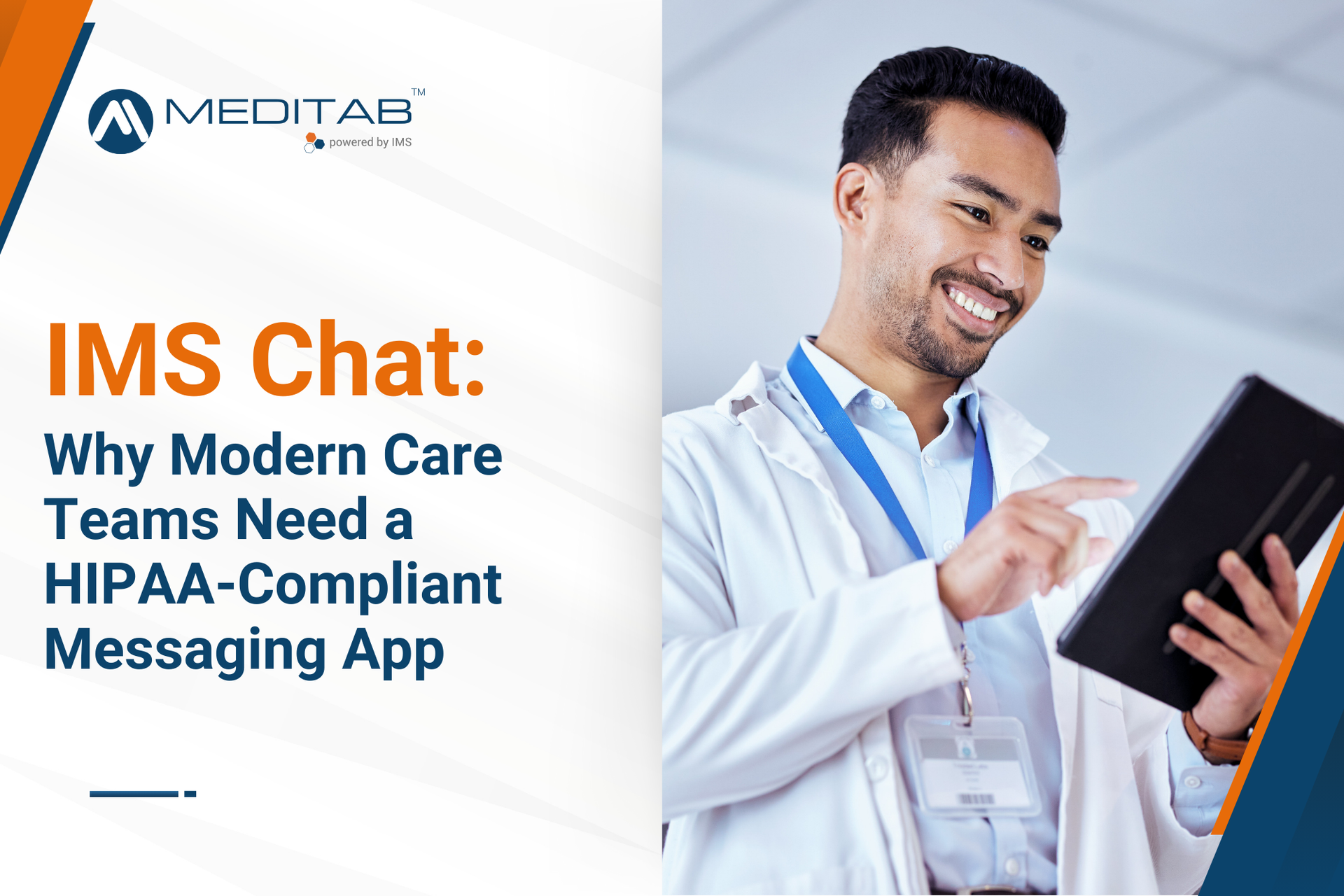The Healthcare Effectiveness Data and Information Set (HEDIS) plays a key role in measuring performance on essential aspects of care services. It is a set of measures to evaluate how well healthcare providers deliver care, from preventative services to managing chronic conditions. One of the main challenges in meeting these standards is care gaps.
Care gaps, or missed treatments or services, can harm patient outcomes and affect provider performance. As the healthcare industry leans toward value-based care, closing care gaps is a must. This will allow providers to hit performance metrics and earn more from HEDIS.
At Meditab, we understand care gaps are more than just missed checkups—they are lost opportunities, compliance risks, and barriers to better care. In this blog, our experts show you how to use smart data practices to bridge those gaps, achieve higher HEDIS scores, and see better patient outcomes.
Close HEDIS Care Gaps in No Time
Understanding HEDIS Care Gaps
Closing care gaps starts with understanding what they are and why they matter. Simply put, these are the gaps between the care patients should receive and the actual care delivered. These aren’t just numbers on a chart; they represent real missed opportunities to improve patients’ health and well-being.
Common HEDIS Care Gap Challenges
With how complex modern healthcare is, Managing HEDIS data can feel overwhelming, especially when considering all the challenges at once. Let’s break down the most common issues to start addressing performance gaps with a more organized approach.
Fragmented Data Sources
Healthcare data is often scattered across various platforms—EHRs,
billing systems, and even paper records.
Gaps in patient information make it harder to track who needs screenings, follow-ups, or treatments.
Incomplete data can lead to missed opportunities for timely care and a less holistic understanding of the patient’s health.
Difficulty in Data Extraction and Integration
While capturing data is usually more straightforward, ensuring that data is accessible and integrated across multiple systems is another major challenge.
Outdated systems and incompatible formats create barriers to accessing data quickly and accurately. The lack of interoperability prevents seamless data flow across different platforms, causing inefficiencies and delays.
Care teams waste valuable time on manual data management tasks, increasing the risk of errors and delayed interventions.
Compliance and Regulatory Challenges
Keeping up with HEDIS measures means you’re constantly juggling patient care and fulfilling compliance requirements.
Complex rules, tight deadlines, and constant updates can overwhelm providers.
Falling short of compliance could mean penalties, reduced reimbursements, or even loss of patient trust.
Essential Data Management Strategies
With a clear picture of the challenges in HEDIS data management, it’s time to strategize. To turn these obstacles into opportunities for better patient care and improved HEDIS compliance, adopt the following strategies:
Data Integration
Fragmented data is one of the biggest hindrances to closing care gaps. This is where integration comes in.
Consolidate information from
EHRs, billing systems, and other sources into a unified platform.
When data is stored in one place, providers can easily access complete patient records, eliminating duplication and ensuring nothing is overlooked.
Analytics and Reporting
Centralized data solves a major issue, but making sense of all the information is another story. Data analytics for healthcare can help you draw insights from your data and see areas of improvement in your HEDIS compliance.
Use advanced analytics tools to identify care gaps, monitor trends, and prioritize interventions.
A reporting dashboard could flag patients overdue for screenings, enabling care teams to act proactively.
Automation
Manual processes are prone to delays and errors. Automation not only expedites your workflows but also boosts accuracy and integrity.
Through automation, appointment reminders and follow-ups are sent to patients without the need for human intervention, significantly reducing administrative burdens and ensuring compliant care.
Automation ensures timely actions while freeing up your staff to focus on patient care.
Real-Time Data Access
Healthcare is constantly evolving, and your practice needs to stay ahead of all the changes. That’s why it’s essential to have a data management system that is as dynamic and adaptable as the industry itself.
Having real-time data access ensures that healthcare providers are equipped with the most up-to-date information to make timely and effective decisions. An
EHR system with this capability can make a big difference in closing care gaps and improving the quality of care delivery.
By implementing these strategies, practices can streamline workflows, improve care delivery, and achieve better HEDIS scores. The path to a future without care gaps begins with smarter data management.
Benefits of Effective Data Management
With the right strategies in place, effective data management doesn’t just close care gaps—it transforms the entire clinical experience. Here are some key benefits of smart data management.
Improved HEDIS Scores
Closing care gaps directly enhances your HEDIS performance, leading to impactful benefits for all parties.
- For patients: Higher HEDIS scores mean better adherence to care standards, leading to improved health outcomes.
- For providers: Meeting HEDIS benchmarks often translates into increased reimbursements and financial incentives.
- For payers: Strong scores ensure compliance with quality programs, boosting credibility.
Reduced Administrative Burden
Managing HEDIS data can be labor-intensive, but the right combination of an effective EHR system and streamlined SOPs in your practice can significantly reduce the workload, allowing your team to focus more on patient care.
How it helps:
- Automating routine processes (e.g., reporting, reminders) frees up staff to focus on patient care.
- Consolidated data minimizes time spent hunting for records and correcting errors.
Enhanced Patient Satisfaction and Trust
When patients receive timely and proactive care, it significantly impacts their experience and fosters trust in your practice, ultimately improving patient engagement.
- Timely interventions: Proactive follow-ups and reminders help patients stay on top of screenings, appointments, and treatments.
- Improved communication: Secure messaging and real-time updates keep patients informed and engaged in their care journey.
Best Practices for Healthcare Providers
Proactively managing HEDIS care gaps requires consistent and strategic actions. Here are the best practices to streamline your compliance:
- Audit and update patient records regularly
Outdated records can lead to missed care opportunities and inaccurate HEDIS metrics. Conduct regular audits to verify patient information and correct discrepancies flagged by EHR tools.
- Train staff on data tools
Maximize the potential of your technology by empowering your team with proper training. Provide workshops or encourage your team to take online courses about data tools and strategies courses.
Payers help define quality measures and facilitate data sharing. Work closely with them to achieve your goals and improve patient outcomes. You may schedule regular check-ins and establish data-sharing agreements for a more unified approach to care.
Following these practices ensures reliable data, informed staff, and strong partnerships—all crucial for closing care gaps for maximum HEDIS compliance.
Achieve Your HEDIS Goals with Ease
Closing HEDIS care gaps through strategic data management creates a win-win situation for you and your patients. By integrating data, automating workflows, and leveraging real-time insights, you can ensure your patients receive timely, proactive care while your practice operates more efficiently and profitably.
If you’re ready to take your data management to the next level, Meditab is here to help.
Our Intelligent Medical Software (IMS) includes HEDIS reporting features and advanced data management tools, which can streamline your practice’s workflow and generate accurate reports for better compliance.
Our Quality and Risk Adjustment (QRA) team provides the tools and support you need as you adhere to every HEDIS measure. They will help identify areas for improvement, ensure accurate coding, deliver regular HEDIS star reports and more
Eliminate HEDIS Care Gaps for Good



